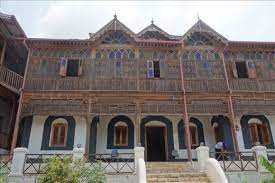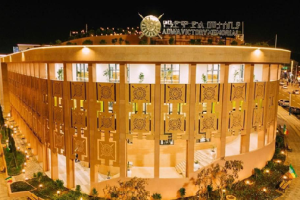
Ethiopia is bedecked with breathtaking and magnificent obelisks, rock-hewn churches, and other architectural heritages. The nowhere else to be found historical heritages give the country a peculiar look, serving as a landmark in its place in the world of tourism.
These man-made treasures continue to entice tourists and enthusiasts who crave for uncovering the yet-to-be-examined Ethiopian wisdoms and skills.
The beauty in Ethiopia’s architectural heritages starkly lies in the time-old wisdom of the country’s engineering performances and stone arts. Surely, as the pundits argue the elegance of building designs stems from engineering creativity, and the aesthetical intelligence of the builders.
It is for this undisputed reason that archeologists and heritage wonderers have long been trying to explain the wisdom and the skill that built revered and awe-inspiring Ethiopia’s architectural heritages. And, this time, the revival of stone art is adding interesting features to Ethiopia’s old architectural values, while giving a new breath of life to the country’s growing construction sector.
In fact, architectural wisdom and stone art date back centuries in Ethiopia. They even harken back to the pre-Axumite civilization. Some of the architectural heritages that even made one of the wonders of the world have been built during ancient times.
At the heart of Ethiopia’s iconic architectural works are the spectacular Lalibela rock-hewn churches. The holy city of Lalibela in the mountainous highlands of Ethiopia hosts some of the most fascinating medieval architecture in the world today.
Hewn into the rocks are intricately designed pieces of monolithic rock-cut religious architecture, sacred ground, and a pilgrimage site for Ethiopians and international visitors. The marvelous yet complex architectural works entice thousands of tourists yearly. Besides its religious significance, the churches also serve as a source of knowledge attracting well-known civil engineers and archeologists.
There are dozens of rock-cut churches in the Amhara and Tigray regions, excavated and hollowed out from vast stretches of rocks. In fact, from Axum obelisks to Lalibela Rock-hewn Churches, Ethiopia has a rich architectural heritage. These tangible heritages clearly depict the centuries-old and spectacular intangible knowledge of Ethiopian communities.
Besides, the UNESCO inscribed heritages; Ethiopia is home to myriads of historical heritages that indicate the country’s rich stone art traditions. The stunning rock-hewn churches that are located in different parts of the country, particularly the northern part are worth-visiting heritages.
Equally true, the Axum obelisks prove the wisdom of Ethiopia’s architectural legacies. The obelisks also depict worth-studying intangible engineering arts that spanned from ancient times to the present. The world’s wonders are frequented by international visitors from all corners of the world. These architectural works also like other heritages are being used to study Ethiopia’s engineering values.
Both heritages serve as a foundation for modern-day architectural knowledge and they continue to contribute to the construction and engineering works of the present day. In some cases, the DNA of these architectural works is visible in the current construction works.
Presently, with the construction sector booming in the country, the stone is reviving too. The art is lending high-rising buildings state-of-the-art looks. These arts are being increasingly used for finishing works adding astounding looks to modern buildings. In some cases, the modern and traditional artworks are being fused to give the city a peculiar view of urban architecture.
For many, stone art is reminiscent of Ethiopia’s acclaimed architectural assets. The fusion of modern and traditional knowledge in construction works is surely contributing to the growing sector. Stone art is not only taking the sector to new heights, it is also creating wealth and jobs. The industry is helping technology and knowledge transfers by combining age-old values with modern ones.
Among the reputable stone art companies that supply buildings with good-looking and well-made stones that serve as the best finishing materials is Binyam Amare stone art company.
Biniyam Amare is a pioneer company supplying different well-made stone art products. Established in 1996 E.C., Biniam Amare Natural Stone Art has been the leading company helping revive the art.
The company is among the few factories to garnish the building’s internal and external appearances using natural stones in Ethiopia.
The company is owned by entrepreneurs who have much experience in the industry and it utilizes completely natural & highest quality stones to garnish houses and buildings.
Biniyam started his work with a few technological equipment and finance. Later, his business grew with more customers lured to his products and deepening its toes in the construction industry. More contractors and owners have been ordering new and modern stone art products. The company besides supplying its products is creating job opportunities for unemployed youths. Having two factories, the company has over 200 employees.
His works are now boldly visible in the city’s high rising buildings and privately and publicly built construction works. The natural stone arts are affording the city splendor and magnificent views. His enthusiastic works have emboldened the government to award him contracts so that he beautifies public parks with state-of-the-art stone art works. So far, the company took part in Entoto, Sheger, and other big public parks.
The company has now grown to be the leading stone art products supplier. It is now engaged in constructions works being carried out across the country. He is mostly active in universities.
The company is able to exhibit nature on the buildings in the different cities of the country and change the building construction culture which has been leaning on glass and ceramics by the new approach
In addition to Biniyam, many more companies are now joining the art bringing new skills and innovation. For many, if the industry gets the required support, it will definitely revive the architectural wisdom of the country. For many in fact, the industry is not only adding elegance to cities but also turbocharging the construction sector.
Injecting new knowledge and innovation, the art is contributing its share to the growth of the construction sector. The art is making an immense contribution to urban development whilst benefiting low-income citizens who are involved in the art.
With public spending on the construction sector upping year to year, the art is going through a rosier period. And, the combination of modern and traditional art will surely propel Ethiopia’s architectural wisdom
BY DESTA GEBREHIWOT
The Ethiopian Herald 3 April 2022





